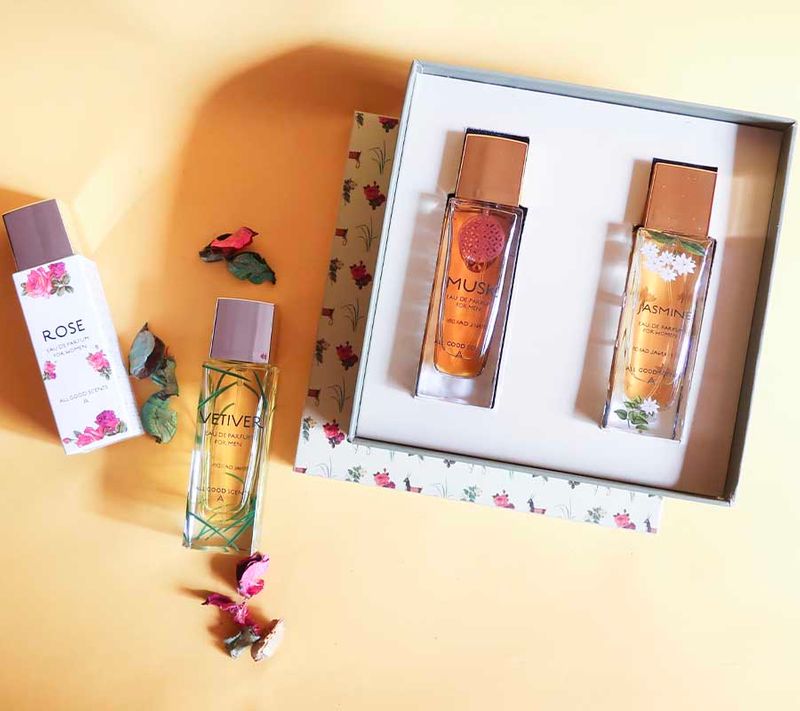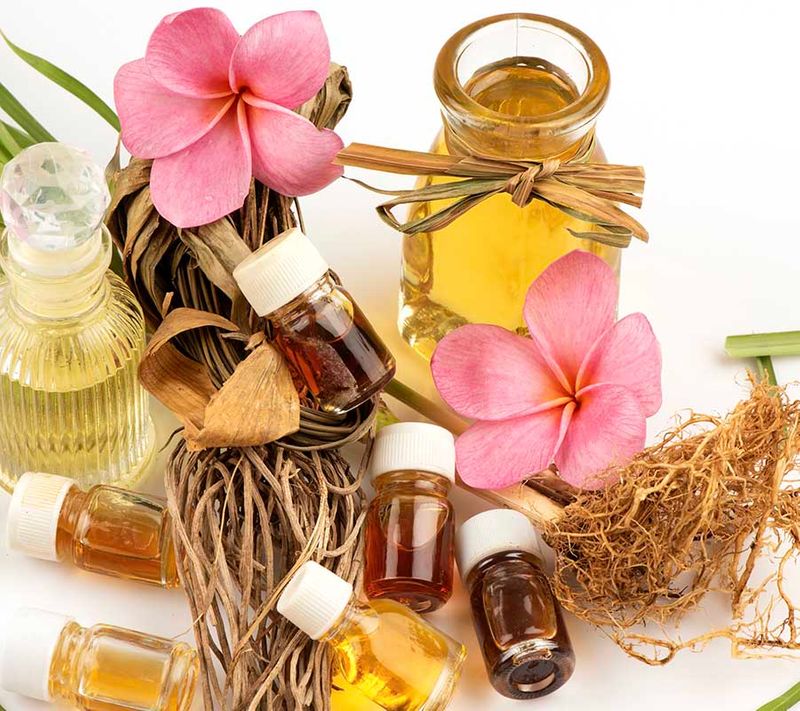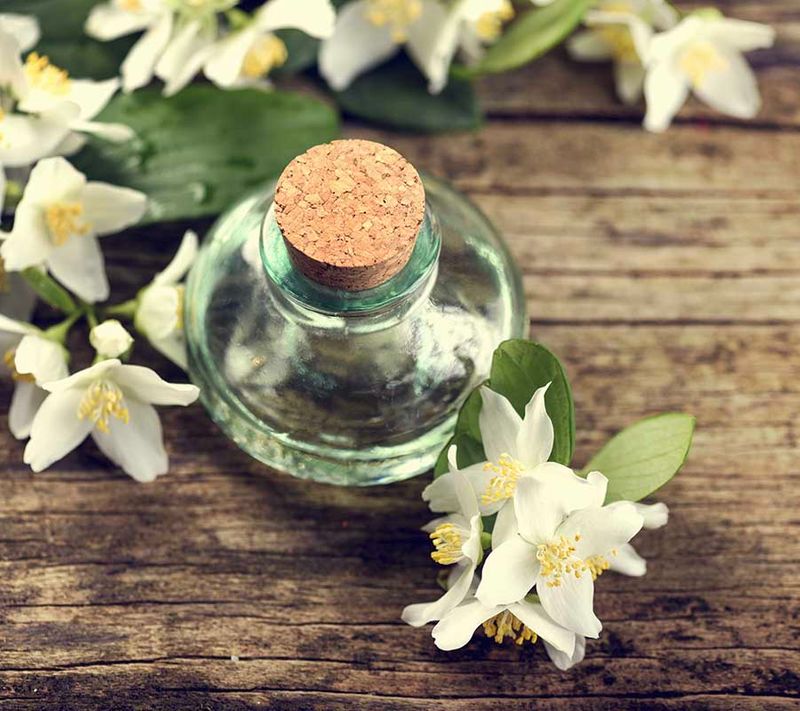For decades now, prized Indian ingredients have made their way into modern perfume formulations, from the Madurai jasmine in Dior and Chanel to the rare Mysore sandalwood, and even the Kannauj rose. Some others widely used ingredients like patchouli and davana, even derive their name from Indian languages (Tamil in this case).
Traditional Indian perfumes distilled over sandalwood in earthen pots, called ‘attar’ still form a large part of the Indian fragrance market.
As more and more modern Indian fragrance houses arrive on the scene and make their presence felt in the international market, we decided to take a step back. We asked Indian perfumers, what constitutes an ‘Indian perfume’ in the first place? Is it the ingredients? The technique? The inspiration? Or all these factors.
What we got was a few answers and generous lessons in formulations and the history of perfume. Here’s what they had to say:
Cultural appeal and branding
“For me, having a lot of experience in international perfumery, it is through ingredients, which culturally and emotionally appeal to us (Indians), that a perfume can be called Indian.

Earlier we had talcum powders then they were replaced by deodorants, now we are progressing to EDTs and EDPs, in essence, fine perfumery.
We use ingredients such as vetiver and jasmine, that is very international. While people from all over the world will connect with it, Indians will have a distinct cultural connection. For example, if I put gulkand and chandan together in a fragrance, people in the West will see it as an interesting blend but for Indians it will make more sense culturally and even evoke nostalgia.
Indianness also has something to do with the brand language used across platforms where we talk about the culture and what makes us a homegrown brand rooted in the country. We have a collection called Eternal Garden with four fragrances (rose, jasmine, vetiver, and musk). We wanted to give it a contemporary Indian feel. It’s like a modern version of Indian attars. It has Indian jasmine but with orange blossom and some spices. People feel that they are smelling jasmine, but as a modern interpretation.
‘Indian’ according to me, has little to do with technique. The only technique that is inherently Indian is that of attar.”
~ Rajiv Seth, Founder and CEO, All Good Scents
A distinct palette

“Imagine a painter with his/her palette that has a certain set of dominant colours. These vary with region, cultural influence, and personal style. It is similar with perfumers. A perfumer’s palette too varies with region and culture.
The first big difference is in the fragrance profile. Indian fragrances are deeper, darker, and even more cloying. We (Indians) like our fragrances strong and therefore attars continue to capture a large market share. Fine fragrances, especially French ones, are lighter.
It also depends on the cultural implications, in some Western countries strong smells are considered offensive. While here, we have strong florals in our homes too. In South India, people wear flowers every single day. Even if you go back in time to consumer products, hair oils and soaps were fragranced quite heavily. It is something we are used to.

When it comes to technique, Indian perfumes use fewer but stronger ingredients. In European fragrances, there are a lot more ingredients in smaller doses to create a more complex fragrance profile.
An Indian perfume, according to me, is one that creates a perception and brings you back home to memories of Indianness. If I want to make one, I will use Indian materials like geranium from Maharashtra, rose from Kannauj, khus, and Mysore sandalwood, among others. Some of these ingredients are only available in India.
Lastly, ‘Indian’ also has a lot to do with how perfumes are marketed.”
~ Almas Asadullah Sharif, niche perfumery consultant and founder, 19 Petals
The original perfumers
“The roots of modern perfumery are deeply embedded in India. Modern distillation for use in perfumery was recorded in India almost 4,000 years ago. Initially, oil-based Indian attars were the only perfumes available.

Now, ingredients native to India like davana and sandalwood from Mysore, clove from Kerala, jasmine and tuberose from Madurai, oud from Assam, find a place in fine fragrances the world over.
Realistically speaking, ‘attar’ is an Indian perfume. Going further, an Indian perfume in an alcohol base would include distinctly Indian ingredients like rose and jasmine.
Indianness also comes from the intensity. Europeans like their fragrances lighter and a jasmine perfume created there wouldn’t work in the Indian market.”
~ Veeraraghavan Srinivasan, cross-category perfumery expert
Ingredients matter
“A perfume is based on inspiration; it could come from nature or from the vegetation around. In temples in South India, castor oil is poured on stone and creates a characteristic smell, similarly, vibhuti has a distinct smell. Since the smells that surround us in India are so intense and distinct, our perfumes reflect it.
The access to floral materials like the Madurai jasmine also helps give Indian perfumes a unique identity. This varies from region to region, with kewra and rose in the north, to sandalwood and jasmine in the South.
Indian perfumers tend to take a core Indian ingredient and build an international fragrance around it. This could be vetiver, jasmine, or any of the unique spices available in India.
Most Indian perfumes also rely on strong smells and longevity. European perfumes tend to be lighter. As such, Indian perfumery is more base focused with notes like sandalwood or benzoin.
In the end, however, I don’t believe in narrow boundaries. Just as we produce some fine European fragrances in India, someone could also create an Indian perfume, inspired by the smells in India or by using Indian ingredients, in any part of the world.”
~ Prashant, third-generation perfumer and founder, Bulk Aroma




